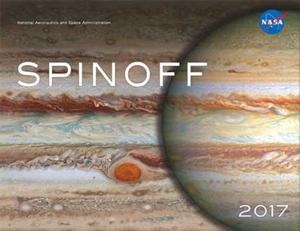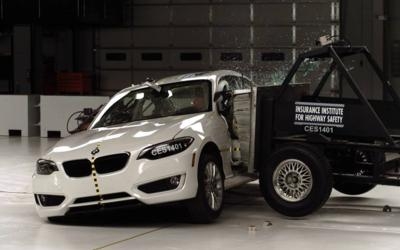Important In The Development Of Everything From Self-Driving Tractors To Brain Surgery Tools
NASA has released its Spinoff 2017 publication, which takes a close look at 50 different companies that are using NASA technology – innovations developed by NASA, with NASA funding, or under a contract with the agency – in products that we all benefit from.

Whether it’s the self-driving tractor that harvests food, cameras used in car-crash safety tests, or tools making brain surgery safer, NASA technology plays a significant role in our daily lives.
“The stories published in Spinoff represent the end of a technology transfer pipeline that begins when researchers and engineers at NASA develop innovations to meet mission needs,” said Stephen Jurczyk, associate administrator of the agency’s Space Technology Mission Directorate in Washington. “This year’s spinoffs includes products and services at work in every sector of the economy. They are innovations that make people more productive, protect the environment, and much more.”
In Spinoff 2017, learn how:
- NASA’s work at its Jet Propulsion Laboratory on precise GPS measurements enabled John Deere to build the first widely available self-driving tractors, which now work much of the world’s farmland;
- the agency’s longstanding investment at its Glenn Research Center in heat pipes helped Thermacore Inc. adapt the technology to wick away dangerous heat during brain surgery;
- a high-speed, high-resolution camera designed to monitor the Orion spacecraft’s landing parachutes at NASA’s Johnson Space Center now is improving data in automobile crash tests.
- Other highlights include: laser imaging technology that discovered snow on Mars and now helps archaeologists uncover humanity’s past; Earth-observing satellites that spot forest fires before they spread; and software that might help create supersonic jets we could all fly on.

“NASA’s ambitious mission goals require technology that pushes the envelope of what’s possible,” said Daniel Lockney, NASA’s Technology Transfer Program executive. “And these innovations have many secondary benefits for our lives and planet.”
The publication also includes a section, Spinoffs of Tomorrow, that highlights 20 technologies ripe for commercial adaptation, including a new wing design that could make airplanes and wind turbines more efficient; an easy-to-use device that separates DNA, RNA, and proteins outside a traditional lab environment, in a developing country or in space; and a system that autonomously detects faulty wiring and reroutes around it. All are available for licensing and partnership opportunities through NASA’s Technology Transfer Program.
Spinoff is a part of the agency’s Technology Transfer Program. The program is charged with finding the widest possible applications for NASA technology through partnerships and licensing agreements with industry, ensuring that NASA’s investments in its missions and research find additional applications that benefit the nation and the world.
An iPad version of Spinoff 2017, including shortened versions of the stories with multimedia and interactive features, also is available for download in the Apple iTunes store.
(Image provided with NASA news release)
 ANN's Daily Aero-Term (04.25.24): Airport Rotating Beacon
ANN's Daily Aero-Term (04.25.24): Airport Rotating Beacon ANN's Daily Aero-Linx (04.25.24)
ANN's Daily Aero-Linx (04.25.24) Klyde Morris (04.22.24)
Klyde Morris (04.22.24) Airborne 04.24.24: INTEGRAL E, Elixir USA, M700 RVSM
Airborne 04.24.24: INTEGRAL E, Elixir USA, M700 RVSM Airborne 04.22.24: Rotor X Worsens, Airport Fees 4 FNB?, USMC Drone Pilot
Airborne 04.22.24: Rotor X Worsens, Airport Fees 4 FNB?, USMC Drone Pilot




